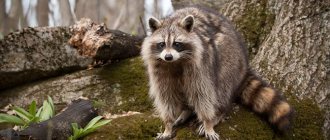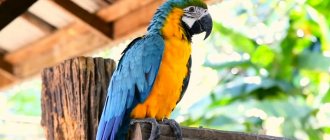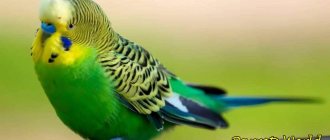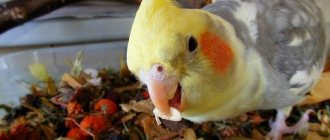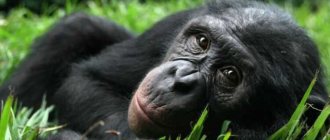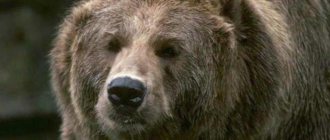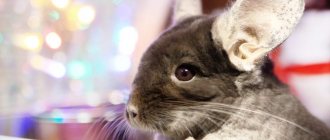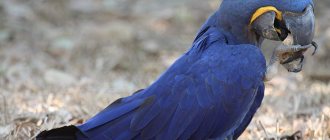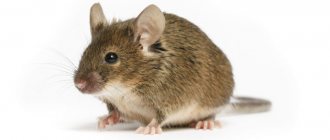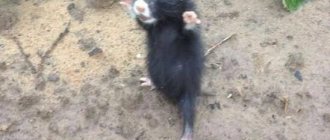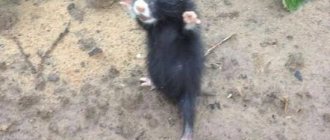In the last 5 years, it has become very popular to keep a Javan monkey or otherwise cynomolgus monkey in the house as a pet. The reasons why this animal is especially popular are quite logical. Crab-eating macaques are relatively inexpensive, intelligent, easy to train, and very calm animals. Today they can often be found performing in circuses, kept in zoos, and even living in the homes of inveterate exotic lovers. Cynomolgus macaques are very friendly, showing warm feelings towards kittens, rabbits and other small animals. In captivity, the life cycle of Javan monkeys reaches a maximum of 36 years.
Description of the macaque
The Javanese macaque is very pleasant in appearance, unlike many members of the monkey family. These monkeys do not grow very large. Their body length without a tail ranges from forty to sixty-five centimeters. The tail is long - reaches half a meter. An adult male can weigh a maximum of nine kilograms, with a minimum of four. Females are much smaller: only two and a half or maximum four kilograms. The cynomolgus macaque has gray fur, sometimes it has a slight greenish tint. There is a black crest on the top of the head, and a light mustache on the face; sideburns are often found. They have a calm character and do not have a predisposition to aggression. These are very inquisitive and friendly creatures.
Cost of different types
Brown capuchin
Brown capuchin (lat. Sapajus nigritus) the weight of an adult animal can reach 6 kg, body length 30-35 cm, tail 30-56 cm. Males are larger than females. They are considered the smartest monkeys of the New World. These monkeys are easy to keep in captivity and, with proper care, can live up to 50 years.
Price: 160,000 – 180,000 rub.
Saymiri squirrel
These small and smart monkeys are considered one of the calmest and non-destructive when kept at home. The size of saimiri is small. Body length 26-36 cm. Tail length 35-42 cm. Weight approximately 750-1100 g.
Price: 110,000 – 130,000 rub.
White-eared marmosets
Ordinary marmosets or marmosets are charming small monkeys. Body length with head - up to 20 - 30 cm, tail length up to 40-50 cm. Weight: 250-320 g, males are slightly larger than females. Life expectancy is 10 years in captivity up to 16 years.
Price (average): 85,000 – 90,000 rubles.
Approximate prices based on recent listings:
- baby marmosets available in St. Petersburg – 80 thousand;
- male white-eared marmoset 2 years old from owners in Sochi – 50 thousand;
- marmoset in Kemerovo without the possibility of shipment - 80 thousand;
Red-armed tamarin
The red-handed tamarin (Saguinus midas) is a species of marmoset monkey from the genus Tamarin. The body length is from 21 to 28 cm, the tail is from 31 to 44 cm long. Weight is from 400 to 550 g. Life expectancy is 10 - 15 years. The red-handed tamarin is an omnivore and is active during the day. The main diet is fruits, insects, nectar and tree sap.
Price: 85,000 – 95,000 rub.
Cynomolgus macaque
The Javan macaque is one of the most common macaques both in circus training and in home keeping. Medium sized monkey. Body length is from 40 to 60-65 cm. The weight of an adult male is 4 - 8.5 kg, females 2.5 - 3.8 kg.
Price: 165,000 – 180,000 rub.
Dwarf marmoset
The pygmy marmoset (lat. Cebuella pygmaea) is a species of primate from the marmoset family (Callitrichidae). It is one of the smallest representatives of the entire order of primates. Their size is only from 11 to 15 cm, not counting the tail, which is from 17 to 22 cm long. The weight of dwarf marmosets is from 100 to 150 g.
Price: 80,000 – 90,000 rub.
Green monkey
Green monkeys are small representatives of the Old World monkeys; these monkeys were known in ancient Egypt. Body length with head 57-71 cm, tail 30-48 cm, weight: females 2.5-3.5 kg, males 5-7.5 kg. Life expectancy in captivity is up to 45 years.
Price: 145,000 – 160,000 rub.
Crabeater in the wild
In the wild, the Javan macaque lives in trees near ponds. The monkey is great at swimming and climbing branches. He feels uncomfortable on the ground and tries to quickly get to the tall thickets of trees.
An interesting fact about these little animals: sitting on the top of a tree, they track crabs, and when they see them, they quietly creep up, grabbing a stone. The monkey uses this stone to break its shell to eat the meat.
Like all monkeys, cynomolgus macaques live in groups, each with a leader. But unlike all other primates, the leader does not consolidate his status by using physical force, taking food from his relatives. On the contrary, the Javanese leader helps the members of his pack and shares the food he gets with them.
The Javanese macaque lives in the Guinea Islands, Thailand and Indochina. Less common in the Palau archipelago and Mauritius. Habitat: tropical forests close to water.
Features of life in a group
When living freely, the usual number of individuals in a group of cynomolgus macaques connected by family ties is approximately 30. They spend most of their time in the trees in search of food. They rarely descend to the ground. Typically the group consists of females and males (about 50/50). The group is controlled by a leader, from whom almost all, with rare exceptions, cubs are born. Having reached sexual maturity, males leave their families, subsequently forming new groups. Female macaques traditionally inherit the position of their mothers, that is, exclusively matriarchy reigns in families.
Cynomolgus macaque at home
Many exotic lovers keep various representatives of the wild world as pets in their homes. From the monkey family, it is the Javan macaque that is preferred. Keeping this monkey at home does not cause much trouble, but it does require certain knowledge. You need to keep the macaque in a large, spacious cage with a lot of light - Javanese are active during the day, and if there is not enough lighting in the enclosure, the monkey will be lethargic and sleepy. In the cage you need:
- Equip the play area: hang a variety of ropes and ropes, ladders and toys.
- Organize a place to sleep.
- Install a special feeder and drinking bowl separately from the “children’s” and “bedroom”.
- Make the tray for physiological needs retractable, sprinkle the sawdust filler with an odor absorber so that there is no toilet smell in the house.
Cynomolgus macaques are social animals and need to be socialized. There is a need to let her out of the enclosure during the daytime to play and socialize. Here you need an eye and an eye. This macaque is very inquisitive, it can eat new shoes or ruin the upholstery of furniture (of course, this is possible when the monkey is just getting acquainted with the house), and can harm its health by swallowing something sharp or cutting itself. The Javanese is the same child. You need to devote a lot of time to him, talk to him, teach him something and entertain him. The monkey will repeat everything after you, so what it will learn depends only on you. If you teach a monkey to wear clothes from an early age, then in the future the monkey will not leave the cage, especially on the street, undressed. Everyone needs to feed the monkey, but selectively. Vegetables: potatoes (boiled), cabbage, carrots, lettuce, tomatoes and cucumbers, beets. From meat: beef liver, chicken fillet, fish, any meat. Any fruits and berries. You need to give milk, water, herbal tea, chicken and quail eggs. In winter, introduce prebiotics, rosehip syrup, and various vitamins into the diet.
Reasons for listing Javan monkeys in the Red Book
Every year, the population of the countries of the Asian region is growing rapidly, which is directly responsible for the reduction in the natural habitats of many species of flora and fauna.
Taking into account the reproductive characteristics of cynomolgus macaques (each female gives birth to only one baby during her entire life), it is natural that as their habitat decreases, the total population size also decreases. In addition, in some countries, Javan monkeys are considered pest animals, which leads to their targeted destruction. And some of the habitats of these funny animals are known for the fact that local residents eat them, and accordingly, they are constantly actively caught.
Based on the above facts, it is clear that the Cynomolgus macaque is in dire need of protection, which is why this species of mammal was listed in the Red Book.
Where to buy a cynomolgus macaque?
You should be extremely careful when buying a monkey. It is generally illegal to sell this species. Smugglers transport animals in terrible conditions, many die during transportation. If you want to purchase such a monkey, then it is better to find an official breeder or a person who has two individuals in his care - a male and a female. It is better to wait a little for the birth of the baby than to purchase a sick individual brought from the tropics.
When choosing a baby, you should pay attention to how he reacts to toys. If there is no reaction, it means the baby is weak and unadapted to life. If he immediately grabs a toy or your hand, then this is a healthy cynomolgus monkey. The price for such a miracle ranges from 150 to 200 thousand rubles.
Population and species status
The total number of snow macaques living on the islands of the Sea of Japan is 114,430 individuals. Depending on weather conditions, as well as the availability of food, the number of these animals can either increase or decrease within insignificant limits.
Japanese macaques are found:
- Within the island of Hokkaido.
- On the island of Honshu.
- On the island of Shikoku.
- On the island of Kyushu.
- On the island of Yakushima.
The northernmost population is located in the north of Honshu Island. About 160 individuals live here. The southernmost population lives on the island of Yakushima. There are about one and a half hundred individuals in this group of monkeys. In the state of Texas, in the USA, there are a little more than five thousand individuals. Here they are under state protection.
The Japanese macaque lives not only in the wild, but also in national parks.
Experts believe that the total number of these primates is at a stable level and does not cause great concern. Despite this fact, these animals require constant attention and care from humans.
Monkey diet
Monkeys eat mostly plant foods
Most of the food that primates eat is of plant origin. This includes fruits, plants, roots, foliage, etc. Some species feed on insects and invertebrate creatures.
Certain monkeys can eat unique foods. For example, marmosets eat gum, which is extracted from trees. Their teeth allow them to break off pieces of bark under which the delicacy is located.
Interesting fact: red-backed sakis have a special gap in their jaws that allows them to split the bones of fruits and get to the kernels.
Howler monkeys and howler monkeys can eat tough tree foliage due to the chamber structure of their stomach. The separation of the organ with the help of partitions allows the digestion of chewed plant pulp. For better absorption, microorganisms live in the body of such primates that quickly process cellulose.
Primates with cheek pouches can store food reserves in them, which are absorbed after some time.
